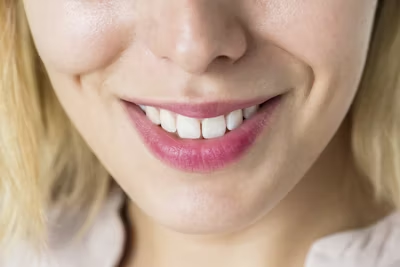HEALTH
Dialectical behavior therapy techniques

Dialectical behavior therapy is a type of evidence-based therapy that originated from cognitive behavioral therapy.
This therapy has been scientifically proven to assist in the improvement of several mental health conditions and overall quality of life. The main goal of DBT is to assist patients in developing a mentally fit life by enhancing their capability for managing emotions.
Dialectical behavioral therapy is a kind of talk therapy that can assist you in learning to accept yourself without judgment. You will also work on changing all negative and unhealthy behaviors that are holding you back in your life.
If you are struggling to manage your emotions or control your unhealthy or harmful behaviors, then dialectical behavior therapy is one of the best choices for you. You will also learn new problem-solving and behavior-management skills.
Before exploring the dialectical behavior therapy techniques, it’s important to know what are the six main points of dialectical behavior therapy are.
- Mindfulness: DBT focuses more on mindfulness, which includes being completely present in the moment and nurturing awareness of an individual’s thoughts, environments, and feelings. Mindfulness exercises like deep breathing and body scans assist individuals in regulating emotions, reducing imprudent behaviors, and developing a sense of calmness and clarity.
- Tolerating distress: Life is full of situations that trigger disturbing emotions. DBT supports individuals in coping with such situations in healthy ways without any harmful behaviors. Methods like self-soothing, radical acceptance, and disruption assist individuals in navigating through difficult moments and developing resilience.
- Emotional regulation: A lot of individuals dealing with mental health problems find it difficult to recognize and manage their emotions efficiently. DBT offers plans and skills for assisting individuals in understanding and regulating their emotions correctly. This involves identifying and labeling emotions, learning to cope with distress, and developing mechanisms to cope with matters positively.
- Interpersonal value: Our relationships play an important role in complete wellness. DBT identifies individuals’ difficulties in interpersonal communication and emphasizes teaching efficient communication and problem-solving mechanisms. By enhancing interpersonal efficacy, individuals can develop healthy relationships, decrease conflicts, and increase quality of life.
- Middle path: Finding balance is important in DBT. This point focuses on the importance of accepting oneself as one is and also working for personal growth and some changes. It helps individuals embrace the concept of the middle path, where acceptance and alterations coexist. This balanced mechanism assists individuals in avoiding extremes and promotes self-compassion and self-enhancement.
- Practical application: DBT is about utilizing skills in therapy sessions and applying those learned skills in real-life situations. This point emphasizes the vitality of practicing and incorporating these skills daily. By constantly applying these learned skills, a person can experience some positive changes in their nature, relationships, and emotions.
Conditions that dialectical behavior therapy treats
DBT was initially designed for treating people with borderline personality disorder. But now, it is used for the treatment of several other mental health problems. It has been seen to benefit people across various age groups, from teens to older adults.
A borderline personality disorder is a kind of condition that affects how you see yourself and how you relate to others. You might have an intense surge of anger, rapid mood shifts, and a fear of rejection by others. This can result in some deep problems with your self-image, goals, and relationships.
Spontaneous behavior like substance abuse or overspending are some of the difficulties you will face when you have borderline personality disorder. Self-sabotage is another issue where you might quit a job that is going well.
DBT is very useful in treating borderline personality disorder and often leads to:
- Less severe suicidal behavior
- Short hospital stays
- Finding it easy to form and maintain relationships with others
Some of the other conditions that DBT can treat are
- Self-harming behavior
- Suicidal behavior
- Substance abuse
- Bipolar disorder
- Post-traumatic stress disorder
- Depression
- Anxiety
- Eating disorders
Dialectical behavior therapy techniques
Some specified methods differentiate DBT from other kinds of therapy. While many techniques can be utilized, some are more common than others. The four primary techniques that makeup DBT are distress tolerance, interpersonal efficacy, emotional regulation, and mindfulness.
- Learning to use mindfulness: The art of mindfulness is useful in several aspects of life. Emphasizing mindfulness skills as one of the dialectical behavioral techniques can assist you in learning to be completely present in the moment.
- Learning interpersonal efficacy: Interpersonal efficacy follows core mindfulness. It emphasizes how you can have positive interactions with people in your life. You can learn to navigate stressful difficulties that you may face and also how to manage personal relationships. You can focus on clear communication, letting go of hatred, learning to say no, and emphasizing how to ask for what you require.
- Learning to deal with and tolerate stress: By learning distress tolerance, you will learn how to accept change. There are certain techniques to emphasize that will teach you how to manage and deal with life’s crises. These include:
- Focusing on enhancing stressful situations
- Learning self-soothing
- Recognizing ways to enhance stressful situations
- Finding out what are the pros and cons of any situation
- Learning to regulate emotions: Emotional regulation is the last skill taught in DBT therapy sessions. Emotional regulation is considered one of the relevant DBT skills training in the whole process. Learning to manage and control emotions, especially if you are an intense person, is very difficult, but it’s possible to do it. Emotional regulation is one of the techniques in DBT that enhances your ability to
- Feel less susceptible
- Easy regulation of intense emotion
- Being confident in your abilities to control how you are feeling
Conclusion
Dialectical behavior therapy provides several relevant techniques for enhancing emotional regulation, mindfulness, distress tolerance, and interpersonal efficacy. Whether used in a therapeutic context for individuals with specific mental health issues or with some broad applications, these techniques can increase emotional wellness and life satisfaction. As with several other therapeutic tools, the advantages of DBT techniques are best felt through constant practice and use in daily life.
HEALTH
Smile Makeovers the Orthodontic Way

A beautiful smile isn’t just about straight teeth — it’s about harmony, confidence, and a reflection of your overall health. While cosmetic dentistry often grabs the spotlight in the realm of smile makeovers, orthodontics offers a powerful and often overlooked pathway to transformation. Whether it’s traditional braces, clear aligners like Invisalign, or more advanced orthognathic (jaw) corrections, orthodontic treatment doesn’t just straighten teeth — it reshapes your facial balance, improves your bite, and contributes to long-term oral health.
In this article, we explore how orthodontics can deliver a holistic smile makeover that goes beyond aesthetics.
What Is a Smile Makeover?
A smile makeover is a customised plan to enhance the appearance of your smile using one or more dental procedures. This might include teeth whitening, veneers, crowns, implants, and — crucially — orthodontics.
Many people immediately think of veneers or bonding when they imagine a smile makeover. However, orthodontics can serve as the foundation for any cosmetic work that follows, providing a more natural, long-lasting result without invasive tooth reduction.
The Orthodontic Advantage: Beyond Just Straight Teeth
Orthodontics works with your natural teeth and jaw alignment to achieve a balanced, functional, and beautiful smile. Here’s what sets it apart:
1. Improved Facial Harmony
Orthodontic treatments, especially those involving jaw realignment, can drastically improve the facial profile. Correcting an overbite, underbite, or open bite can change the way your lips, chin, and jawline look — often with a dramatic improvement in symmetry.
2. Healthier Bite Function
Misaligned teeth and jaws can lead to abnormal wear, TMJ disorders, and chewing issues. Orthodontic treatment corrects these problems at the source, helping to prevent long-term damage and discomfort.
3. Natural Smile Enhancement
While veneers and crowns are artificial coverings, orthodontics works with your natural teeth. By aligning them properly, you get a smile that’s authentically yours — no masking or shaving necessary.
4. Long-Term Stability
Cosmetic fixes may chip, stain, or need replacing. Straightened teeth, maintained properly with retainers, can last a lifetime. The investment in orthodontic care often pays off in durability.
Types of Orthodontic Smile Makeovers
Orthodontic smile makeovers aren’t one-size-fits-all. As this smile makeover gallery shows, these are a few of the most common pathways:
1. Traditional Braces
Still one of the most effective ways to move teeth, traditional metal or ceramic braces offer precision and control — especially for complex cases. Adults who want a more discreet option often opt for ceramic brackets that blend in with the teeth.
2. Clear Aligners (e.g. Invisalign)
Invisalign and similar systems are popular among adults and teens who want a more aesthetic solution. These clear plastic trays are custom-made to gradually shift your teeth, and they’re removable for eating and cleaning.
3. Accelerated Orthodontics
For those wanting quicker results, systems like Invisalign Express or braces with accelerated treatment options can deliver visible changes in 6 to 9 months for minor corrections.
4. Surgical-Orthodontic Treatment
In severe cases involving jaw misalignment, orthodontics can be combined with jaw surgery (orthognathic surgery) to reposition the bones. This not only improves bite and function but often results in dramatic facial enhancement.
Combining Orthodontics with Other Cosmetic Dentistry
Orthodontics often lays the groundwork for additional cosmetic improvements. For instance:
- Whitening is more effective when your teeth are straight and evenly spaced.
- Veneers or bonding placed after orthodontics require less reshaping of tooth structure.
- Gum recontouring can follow orthodontic treatment to further improve smile symmetry.
This collaborative, step-by-step approach ensures a more stable, attractive, and healthy result than doing all cosmetic work first.
Who Is a Good Candidate?
You might benefit from an orthodontic smile makeover if you have:
- Crooked, crowded, or gapped teeth
- Bite issues (overbite, underbite, crossbite, etc.)
- Facial asymmetry or jaw pain
- A desire for long-term, natural results
- Plans for future cosmetic enhancements
Age is no barrier — adults of all ages are now seeking orthodontic treatment often for transforming confidence thanks to modern, discreet options.
Smile Makeover Timeline and Process
Here’s what you can expect:
- Initial Consultation: Includes x-rays, photographs, and digital scans.
- Treatment Planning: Your orthodontist will design a tailored plan, often using 3D simulation to show predicted results.
- Active Treatment: Depending on your case, this can last 6 to 24 months.
- Retention: After treatment, retainers are worn to keep teeth in place.
- Cosmetic Finishing Touches (optional): Whitening or reshaping may be added once teeth are in their ideal position.
A Health-First Approach to Beauty
Smile makeovers through orthodontics are more than skin-deep. They’re about creating smiles that are as healthy and functional as they are beautiful. Unlike purely cosmetic fixes, orthodontics addresses root issues — literally and figuratively.
So if you’re considering a smile makeover, start with the foundation. A consultation with an orthodontist may reveal that the best path to your dream smile isn’t a quick fix — it’s a lasting transformation.
HEALTH
Buy Subutex Online: A Convenient Path to Opioid Addiction Recovery

In the fight against opioid addiction, Subutex has emerged as a proven and effective medication that can help people regain control of their lives. As more individuals seek flexible and discreet treatment options, the ability to buy Subutex online has become a game-changer. With the right medical support, buying Subutex through a trusted online provider can offer a safe and convenient way to start the recovery process.
If you’re looking for a reliable source, ChoicePoint Health offers a specialized Subutex Medication-Assisted Treatment (MAT) Program designed to support your journey toward sobriety.
What Is Subutex?
Subutex is a brand-name prescription medication that contains buprenorphine, a partial opioid agonist used in Medication-Assisted Treatment. It works by activating opioid receptors in the brain to reduce cravings and withdrawal symptoms—without producing the same euphoric high associated with full opioid drugs.
This makes Subutex highly effective in helping individuals manage opioid dependence. Unlike methadone, Subutex can be prescribed in outpatient settings, making it a more accessible option for many people.
Why Should You Buy Subutex Online?
The ability to buy Subutex online opens up new possibilities for people struggling with opioid addiction. Here are some compelling reasons why patients choose this option:
1. Convenience
Online consultations eliminate the need to travel or sit in waiting rooms. Patients can receive evaluations, prescriptions, and ongoing support—all from the comfort of their home.
2. Privacy
Seeking addiction treatment can be difficult due to stigma. Online services offer a level of discretion that traditional clinics often cannot provide.
3. Accessibility
People living in rural or underserved areas may not have immediate access to addiction specialists. Online Subutex programs help close that gap by connecting patients with licensed providers no matter where they are.
ChoicePoint Health offers secure, HIPAA-compliant telehealth services that make the entire process safe and seamless.
Subutex vs. Suboxone: What’s the Difference?
Both Subutex and Suboxone contain buprenorphine, but Suboxone also includes naloxone, which is designed to deter misuse by causing withdrawal symptoms if injected. Subutex is typically recommended in specific cases, such as during the initial phase of treatment or for pregnant patients.
If you’re unsure which medication is right for you, it’s best to consult with a certified provider. Fortunately, ChoicePoint Health also offers access to online Suboxone doctors that accept Medicaid, ensuring cost-effective treatment options are available.
For those seeking similar support with added anti-abuse protection, you can also buy Suboxone online through trusted telehealth programs that make the process smooth and affordable.
How to Buy Subutex Online Safely
Choosing to buy Subutex online is a responsible decision when done through a certified medical provider. Here’s a step-by-step guide to doing it safely:
Step 1: Choose a Legitimate Provider
Work only with licensed healthcare providers who specialize in addiction treatment. ChoicePoint Health is one of the most trusted platforms in this field.
Step 2: Schedule an Evaluation
A qualified medical professional will assess your condition through a secure telehealth consultation and determine if Subutex is appropriate for your treatment plan.
Step 3: Receive a Prescription
If approved, you’ll receive a prescription that can be filled at a pharmacy or delivered directly to your home.
Step 4: Start Your Treatment
With your medication in hand, you can begin your recovery journey, supported by regular follow-ups and counseling if needed.
Medicaid-Friendly MAT Programs
One of the barriers to addiction treatment is cost. Thankfully, ChoicePoint Health accepts Medicaid, making high-quality care available to more individuals, regardless of financial status.
You can explore their Medicaid-friendly Suboxone doctor program to access affordable, evidence-based addiction treatment from certified professionals.
Begin Your Recovery Today
Deciding to buy Subutex online is more than a convenient option—it can be the first step toward a new life. With telehealth services, expert support, and Medicaid-approved programs, you can start your recovery journey safely, securely, and affordably.
Whether you’re looking for Subutex or exploring other MAT options like Suboxone, ChoicePoint Health is a trusted name in online addiction treatment.
HEALTH
The Science Behind Sleep Dentistry: How It Works

For many people, just the thought of a dental visit can trigger anxiety. The fear of the dentist is one of the most common phobias, affecting millions around the world. Whether due to a traumatic experience in childhood, sensitivity to pain, or general anxiety, this fear can prevent people from getting the oral care they need. Fortunately, advancements in dental care have brought a solution that’s changing lives: sleep dentistry.
What Is Sleep Dentistry?
Sleep dentistry, also known as sedation dentistry, involves the use of medication to help patients relax or even sleep during dental procedures. While some might think it simply refers to being put under general anesthesia, sleep dentistry encompasses a range of sedation levels—ranging from mild relaxation to deep unconsciousness. The goal is to make the dental experience as stress-free and comfortable as possible, especially for those who struggle with the fear of the dentist.
Understanding the Types of Sedation
The science behind sleep dentistry lies in its ability to alter a patient’s level of consciousness using carefully controlled sedative agents. There are four main types of sedation used in dental practice:
- Nitrous Oxide (Laughing Gas):
This is the mildest form of sedation. Nitrous oxide is inhaled through a mask and takes effect quickly. It helps patients feel calm and relaxed but does not put them to sleep. The effects wear off rapidly, allowing patients to drive themselves home afterward.
- Oral Sedation:
A pill, usually diazepam or a similar benzodiazepine, is taken about an hour before the procedure. Depending on the dose, it can produce mild to moderate sedation. Patients remain awake but deeply relaxed and often have little memory of the procedure.
- IV Sedation:
Administered through a vein, this form of sedation allows the dentist to control the level of sedation throughout the procedure. It works quickly and is typically used for more invasive treatments. Patients are usually in a semi-conscious state but feel as if they’re asleep.
- General Anesthesia:
Reserved for the most complex or lengthy procedures—or for patients with extreme dental fear—general anesthesia renders the patient completely unconscious. This method is usually performed in a hospital or surgical center under the care of an anesthesiologist.
How Sedation Works on the Brain
Sedatives used in sleep dentistry act on the central nervous system, particularly targeting neurotransmitters like GABA (gamma-aminobutyric acid). GABA reduces neural activity, slowing down brain function and producing a calming effect. Benzodiazepines, a common class of sedatives in dental care, enhance the effects of GABA, resulting in reduced anxiety, sedation, and muscle relaxation.
In some cases, amnesic effects are also desired. Oral and IV sedatives can interfere with memory formation, meaning the patient may have little or no recollection of the dental procedure—a big advantage for those with a fear of the dentist.
Who Can Benefit from Sleep Dentistry?
Sleep dentistry isn’t just for people with dental phobia. It’s also beneficial for:
- Individuals with a low pain threshold
- Those who have a strong gag reflex
- Patients needing multiple procedures in one sitting
- Children who struggle to remain still during treatment
- People with special needs or cognitive impairments
For many patients, sleep dentistry is the key to finally addressing long-standing oral health issues they’ve avoided due to fear or discomfort.
Safety and Monitoring
One of the reasons sleep dentistry has become increasingly popular is due to its safety profile. Dentists who offer sedation must be specially trained and licensed to administer and monitor these medications. Throughout the procedure, vital signs such as heart rate, oxygen levels, and blood pressure are continuously monitored to ensure the patient’s well-being.
Additionally, pre-procedure evaluations help determine the best type of sedation based on medical history, age, weight, and the nature of the dental work. Patients are given clear instructions for before and after the procedure to ensure a smooth recovery.
The Psychological Benefits
Beyond the physical comfort, sleep dentistry plays a vital role in improving mental health for those with dental anxiety. Avoiding dental care due to the fear of the dentist can lead to a cycle of neglect, pain, and worsening oral health, which only heightens the fear. By offering a painless and stress-free alternative, sleep dentistry breaks that cycle and builds positive associations with dental visits.
In many cases, patients who undergo sedation dentistry once find their fears dramatically reduced in future visits—even opting for less or no sedation over time.
With modern techniques and advanced medications, sleep dentistry continues to evolve. More dental clinics are offering sedation options, and growing public awareness is helping to reduce the stigma and misunderstanding around its use.
For anyone who has postponed dental care because of anxiety, sleep dentistry offers a scientifically backed, compassionate solution. It bridges the gap between necessary oral health and emotional comfort, turning a dreaded experience into something manageable—even peaceful.
-

 GENERAL2 years ago
GENERAL2 years agoDiscovering the Artistic Brilliance of Derpixon: A Deep Dive into their Animation and Illustration
-

 Posts2 years ago
Posts2 years agoSiegel, Cooper & Co.
-

 FASHION2 years ago
FASHION2 years agoThe Many Faces of “λιβαισ”: A Comprehensive Guide to its Symbolism in Different Cultures
-

 Lifestyle2 years ago
Lifestyle2 years agoPurenudism.com: Unveiling the Beauty of Naturist Lifestyle
-

 Lifestyle2 years ago
Lifestyle2 years agoBaddieHub: Unleashing Confidence and Style in the Ultimate Gathering Spot for the Baddie Lifestyle
-

 HEALTH2 years ago
HEALTH2 years agoTransformative Health Solutions: Unveiling the Breakthroughs of 10x Health
-

 Entertainment2 years ago
Entertainment2 years agoGeekzilla Podcast: Navigating the World of Pop Culture, Gaming, and Tech
-

 Lifestyle11 months ago
Lifestyle11 months agoSandra orlow: Unraveling the Story of an Iconic Figure
